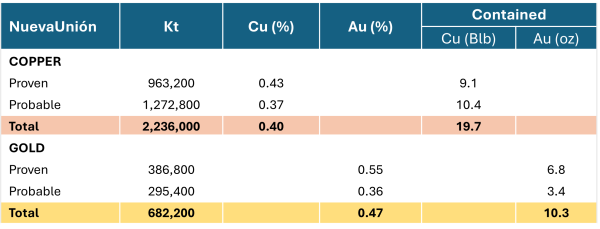- 7,257 Ha of exploitation concessions with two undrilled porphyry copper-gold targets surrounded by the world class Relincho and El Morro/La Fortuna porphyry copper-gold deposits of the NuevaUnión project (Fig 1 & 2)
- NuevaUnión is a joint venture between Teck and Newmont Mining and currently hosts Proven and Probable Mineral Reserves* of 19.7 billion pounds of copper and 10.3 million ounces of gold (Teck 2024 Annual Information Form)
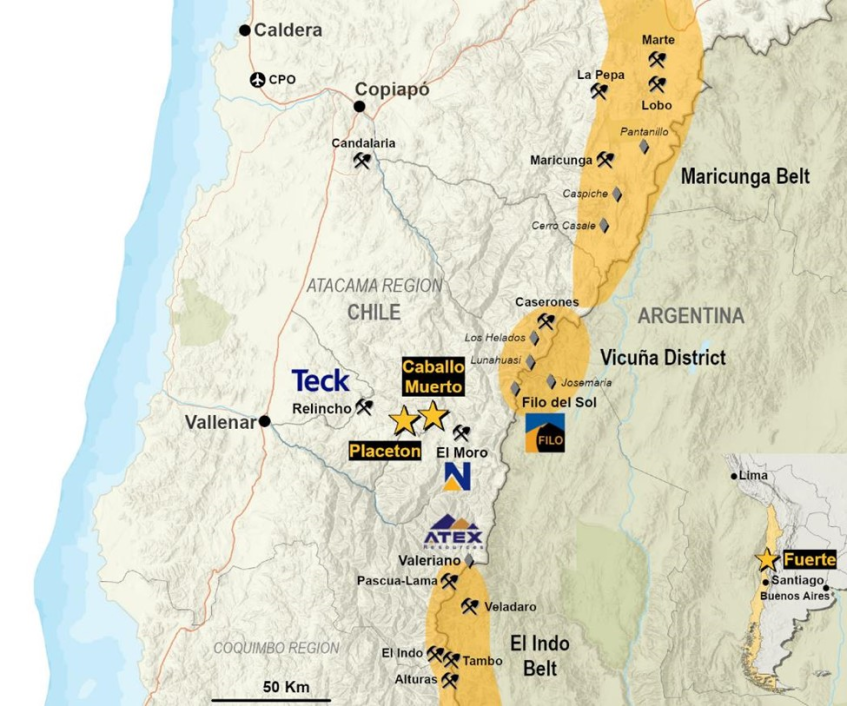
Fig 1 - Property location Placeton/Caballo Muerto concession
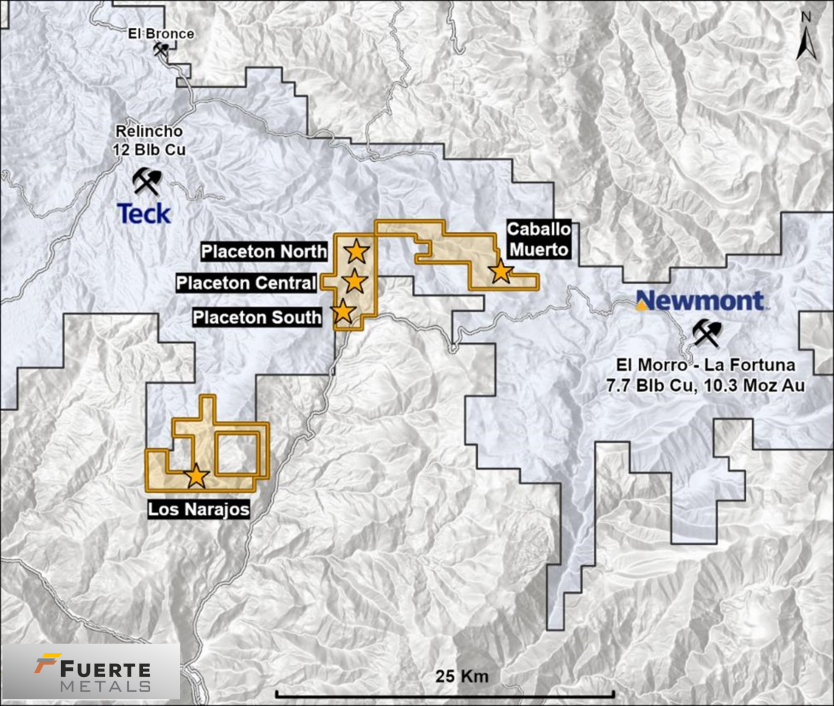
Fig 2 - Property location Placeton/Caballo Cuerto concession (orange) and targets surrounded by the Teck-Newmont NuevaUnion JV project (light blue)Location
- The Placeton project is in the Atacama region of Northern Chile, 55 km east of the mining centre of Vallenar
- The project is accessible year-round by public roads and sits below 4,000 metres elevation
Geology
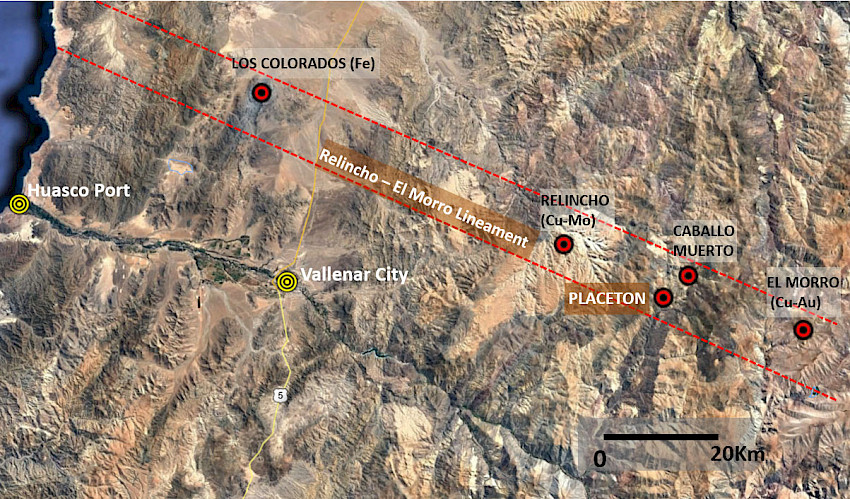
Fig 3 - NW Trending regional lineament that hosts TeckNewmont/NuevaUnion Cu porphyry deposits (Relincho/El Morro) as well as Caballo Muerto/Placeton porphyry targets
Fuerte’s Placeton project is located on a major regional lineament that also hosts the world class Teck-Newmont Nueva Union project with its Relincho & El Morro copper-gold porphyry deposits (Figure 3). The lineament is believed to represent a deep structural feature that favored the emplacement of intrusions and fluids over a long-time span, from the Jurassic to the Tertiary geological ages.
Metallica Resources, who initially discovered the El Morro copper-gold porphyry deposit, processed ASTER satellite imagery to highlight the characteristic El Morro style illite alteration that can be seen at the El Morro/La Fortuna CU-Au porphyry deposit. This same distinctive alteration signature can also be seen at Fuerte’s Caballo Muerto and Placeton targets (bright yellow zones in Figures 4 & 5).
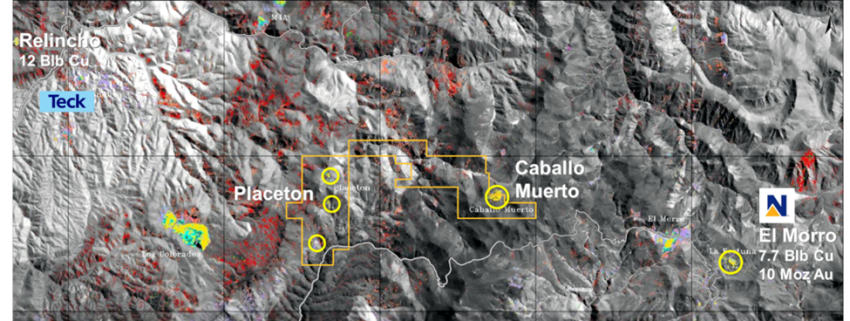
Fig 4 - Processed ASTER satellite images showing illite alteration (bright yellow) 
Fig 5 - Closer view Placeton/Caballo Muerto targets - alteration zones clearly visible on both visible spectrum (left) and ASTER (right)
Caballo Muerto
The Caballo Muerto target is defined by a prominent zone of porphyry-style alteration coincident with a semi-circular hill approximately 900 by 500 metres in size, below 4,000 m elevation and extending northeastwards into the adjacent Nueva Union concessions (Figures 4, 5 & 6). Extensive porphyry-style D-veining is present across the Caballo Muerto hill, with evidence of remnant sulphide minerals seen in outcrop.
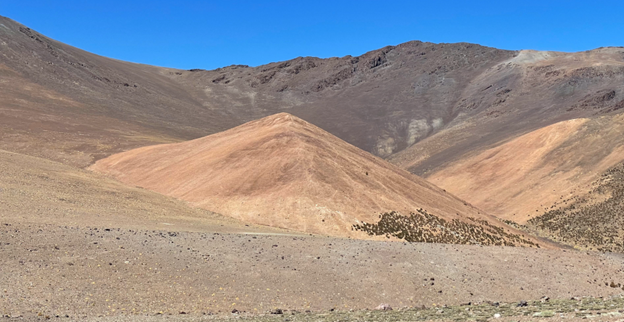
Fig 6 - Caballo Muerto hill (looking south) displaying prominent porphyry-style alteration
Surface geochemical sampling by Fuerte and other companies shows elevated copper, molybdenum and gold centered over the alteration zone at Caballo Muerto. Background levels in the surrounding country rock are generally near or below detection levels, with higher values over the alteration zone of up to 2.6% for copper, 284 ppm for molybdenum and 285 ppb for gold. The geochemical anomaly also shows a good correlation between all three elements (Fig 7).
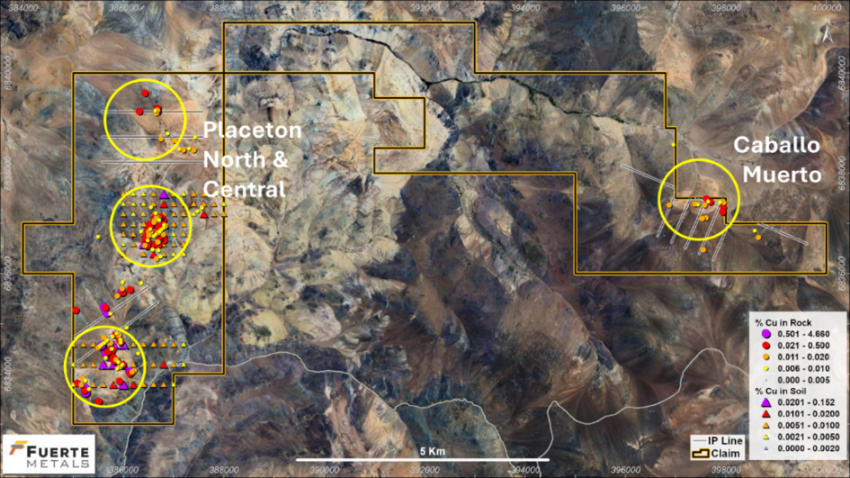
Fig 7 - Copper anomalies in surface samples coincident with Placeton and Caballo Muerto alterateration zones
A ground magnetic survey over Caballo Muerto shows a large, well-defined magnetic low coincident with the alteration anomaly and surrounded by an annular magnetic high that extends northeastward into the adjacent Nueva Union ground (Fig 8)
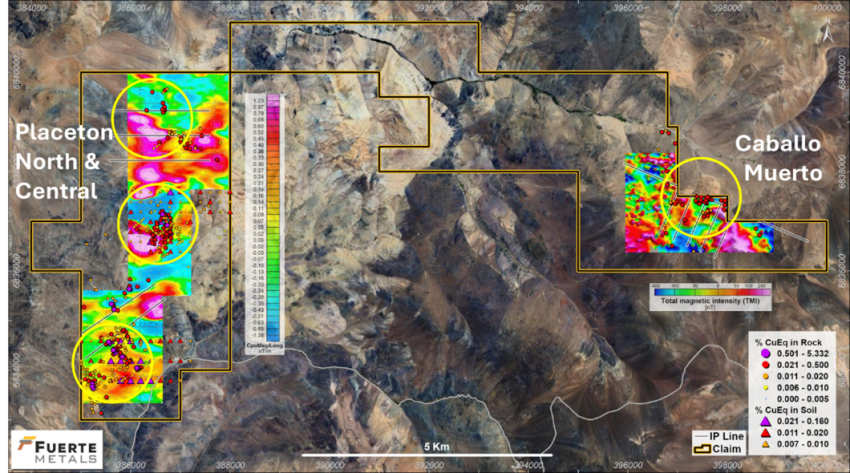
Fig 8 - Total field magnetic survey results shoing well defined cicular magnetic lows characteristic of magnetite destruction coincident with the alteration and surface geochemical anomalies at Caballo Muerto, Placeton North & Central
The pole-dipole induced IP survey shows a strong chargeability high at Caballo Muerto that is also coincident with the porphyry-style alteration, magnetic low and low resistivity area (Figs 9 & 10).
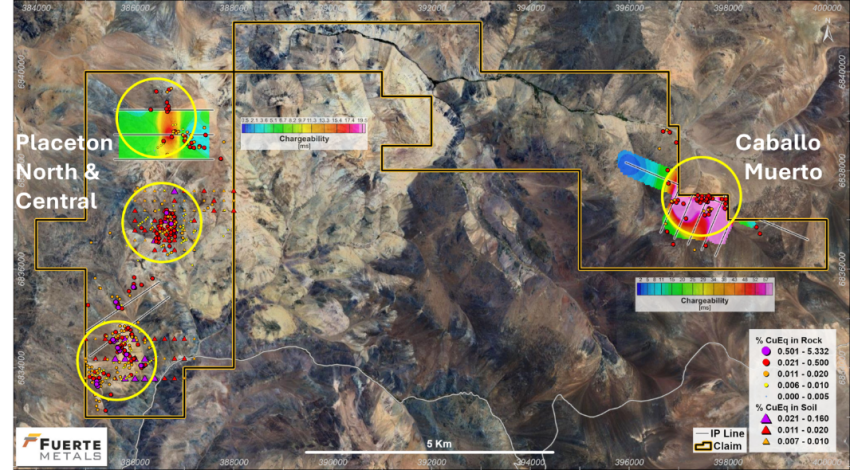
Fig 9 - IP chargeability results showing significant chargeablity highs coincident with the geochemical alteration and magenetic anomalies at Caballo Muerto and Placeton North - often associated with disseminated sulphide mineralization such as pyrite and /or chalcopyrite in porphyry systems
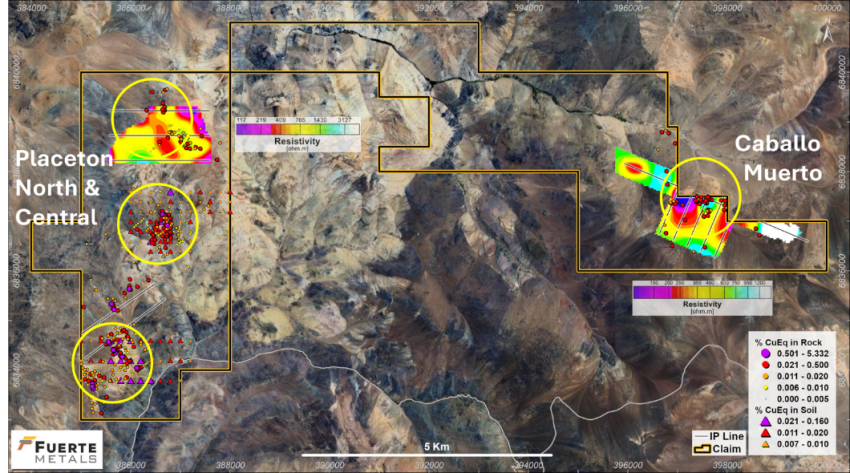
Fig 10 - IP resistivity lows (warm colours) coincident with the geochemical alteration and magnetic anomalies which may indicate the presence of conductive sulphide minerals
Placeton Target
The Placeton target consists of two areas of prominent porphyry-style alteration that outcrop over an approximately 1.8 km north-south zone (Placeton North and Central, Fig 2, 3 & 4). The surface alteration signature at the Placeton target is less prominent than at Caballo Muerto due to the presence of younger volcanics that partially cover the system. A third target, Placeton South, shows less intense alteration and may be peripheral to the main system at Placeton North and Central.
Surface geochemical sampling by Fuerte and other companies shows elevated copper, molybdenum and gold centered over the alteration zones at Placeton North and Central. Background levels in the surrounding country rock are generally near or below detection levels, with higher values over the alteration zone of up to 2.4% for copper, 48 ppm for molybdenum and 50 ppb for gold. These geochemical anomalies also show a good correlation between all three elements (Fig 7).
A drone magnetic survey over the Placeton targets shows both the North and Central alteration zones are coincident, and generally near the edge of magnetic lows (Fig 8).
A gradient array IP survey was only completed over the Placeton North target and shows a north-south trending chargeability anomaly that may indicate the presence of disseminated conductive metallic sulphides. A resistivity anomaly is coincident with the surface geochemical and alteration anomalies and may also be indicative of sulphide mineralization (Fig 9 & 10).
These observations, along with the observed geology, alteration, geochemistry and magnetics, suggest good potential for a porphyry-style copper deposit with a north-south trending structural control, especially with copper present in a small informal working within a small porphyry window at Placeton North.
*Note:
(Source: Teck 2024 Annual Information Form)

